Film
“Rebecca”: The Hitchcock Film That Won Best Picture at the Oscars
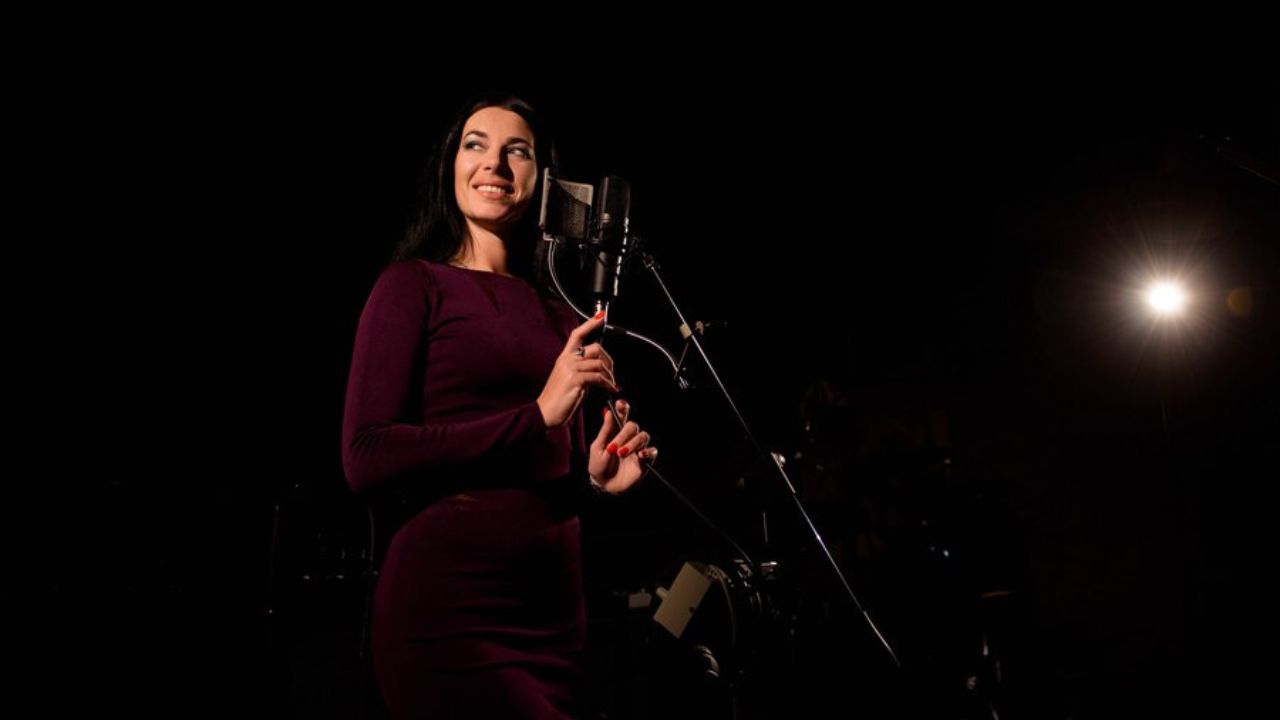
Alfred Hitchcock remains one of the most iconic directors in the history of cinema. His name is synonymous with suspense, mystery, and psychological thrillers. Yet, for all his revolutionary work in the film industry, only one of his films won the prestigious Best Picture award at the Oscars. That film is Rebecca, released in 1940. It stands as a masterful blend of drama, mystery, and gothic romance. Hitchcock’s influence looms large over this film, even though it showcases a slightly different style from his signature works. In this article, we will explore Rebecca, its Oscar victory, and why it continues to stand out in Hitchcock’s illustrious career.
The Making of Rebecca: A New Challenge for Hitchcock
Rebecca marked Hitchcock’s first project in Hollywood after his successful career in Britain. The opportunity arose when David O. Selznick, a prominent Hollywood producer, invited him to work on the adaptation of Daphne du Maurier’s gothic novel Rebecca. The collaboration between Hitchcock and Selznick would be a fruitful, but often tense, one. Hitchcock, known for his autonomy on set, had to adjust to Selznick’s control over the project. However, this tension may have enhanced the film’s unique style, blending both Selznick’s flair for big-budget Hollywood productions and Hitchcock’s innovative storytelling techniques.
The story of Rebecca follows a young, unnamed woman who marries the wealthy widower Maxim de Winter, played by Laurence Olivier. Upon moving to his vast estate, Manderley, she finds herself haunted by the lingering presence of his first wife, Rebecca. As the new Mrs. de Winter, played by Joan Fontaine, tries to adjust to her new life, she becomes increasingly overwhelmed by the memory of Rebecca, which seems to dominate the household.
The Narrative of Rebecca: A Gothic Masterpiece
Rebecca blends gothic romance with psychological drama, creating a film that moves far beyond simple suspense. The central theme of the film revolves around identity, insecurity, and the weight of the past. Hitchcock masterfully builds tension by focusing on the psychological struggle of the new Mrs. de Winter. She constantly feels overshadowed by Rebecca’s memory, which leads to her growing paranoia and fear.
The film also features one of Hitchcock’s most chilling villains: Mrs. Danvers, played by Judith Anderson. Mrs. Danvers, the housekeeper, worships the memory of Rebecca and does everything in her power to undermine the new mistress of the house. Her eerie presence and manipulative behavior create an atmosphere of dread throughout the film. Hitchcock uses this character to heighten the suspense, as viewers are left unsure of her motives until the film’s climax.
The setting of Manderley itself plays a crucial role in the film. The vast, isolated estate adds to the sense of confinement and dread. Hitchcock uses the setting to emphasize the emotional entrapment of the protagonist. Manderley, with its long, dark hallways and overbearing architecture, becomes a character in its own right. It symbolizes the oppressive weight of the past that hangs over the new Mrs. de Winter.
Hitchcock’s Mastery of Suspense in Rebecca
While Rebecca may not have the same overt suspense as some of Hitchcock’s later thrillers, it excels in psychological tension. Hitchcock’s signature use of tension-building techniques is evident throughout the film. He relies on subtle, psychological terror rather than direct, physical threats. The audience is constantly kept on edge, wondering when and how the shadow of Rebecca will finally overwhelm the new Mrs. de Winter.
One of the most striking aspects of Rebecca is Hitchcock’s ability to create suspense without revealing much about the title character herself. Rebecca never appears on screen, but her presence dominates every scene. Hitchcock achieves this by focusing on how the other characters react to her memory. This technique makes the unseen Rebecca feel more powerful and menacing than any physical villain could.
Hitchcock also plays with the audience’s expectations, particularly in the film’s ending. The twist in the narrative adds a layer of complexity to the characters and reframes the audience’s perception of Maxim de Winter’s first wife. This surprise conclusion leaves viewers questioning their own assumptions about guilt, innocence, and the nature of love.
A Stellar Cast: The Driving Force Behind Rebecca
One of the key reasons Rebecca succeeded lies in its stellar cast. Joan Fontaine delivers a standout performance as the insecure and overwhelmed new Mrs. de Winter. Her portrayal captures the fear, anxiety, and gradual breakdown of her character. Fontaine’s ability to convey vulnerability and strength, often within the same scene, keeps viewers invested in her journey.
Laurence Olivier also excels in his role as the brooding and mysterious Maxim de Winter. His portrayal of a man haunted by the past adds depth to the film’s emotional core. Olivier balances a stoic exterior with moments of vulnerability, particularly as the truth about Rebecca slowly unravels.
Judith Anderson, however, steals the show as the sinister Mrs. Danvers. Her cold, calculated performance elevates the tension and adds a layer of horror to the film. Mrs. Danvers is not a traditional villain; she is driven by devotion to Rebecca, which makes her actions all the more disturbing. Anderson’s performance remains one of the most memorable aspects of the film and contributes to its enduring legacy.
The Cinematic Techniques That Defined Rebecca
Hitchcock’s Rebecca stands out not only for its narrative and performances but also for its innovative cinematic techniques. Hitchcock’s use of lighting, shadows, and camera angles creates a sense of unease and claustrophobia throughout the film. The use of chiaroscuro, or the contrast between light and dark, heightens the gothic atmosphere, giving the film a timeless quality.
Hitchcock also employs deep focus and long tracking shots to draw viewers into the story. These techniques immerse the audience in the protagonist’s experience, making them feel the same isolation and paranoia that she does. Hitchcock’s precise control over the visual elements of the film elevates Rebecca beyond a simple adaptation of a gothic novel; it becomes a work of art in its own right.
Rebecca’s Academy Award Win: A Milestone in Hitchcock’s Career
Despite Alfred Hitchcock’s legendary status in cinema, Rebecca remains the only film of his to win the Best Picture Oscar. The film was nominated for 11 Academy Awards in 1941, including Best Director for Hitchcock. However, the Best Picture win belonged to David O. Selznick as the producer. This win solidified Hitchcock’s place in Hollywood, even though he personally never took home the award for directing.
Many film historians argue that Rebecca’s Best Picture win was more a reflection of Selznick’s influence in Hollywood at the time. Selznick had just come off the success of Gone with the Wind, which also won Best Picture the previous year. Nonetheless, Rebecca’s win brought Hitchcock’s talents to a broader audience and helped cement his legacy in the American film industry.
Why Rebecca Stands Out Among Hitchcock’s Films
Hitchcock directed numerous iconic films, including Psycho, Vertigo, and North by Northwest. However, Rebecca holds a special place in his filmography for several reasons. First, it marked his successful transition from British cinema to Hollywood, a move that would influence the rest of his career. Second, it showcased Hitchcock’s ability to blend genres, combining elements of mystery, romance, and psychological drama into a cohesive and compelling story.
Rebecca also stands out because it allowed Hitchcock to explore themes that would appear in many of his later films. The idea of a man haunted by his past, the fragile identity of the female protagonist, and the looming, often sinister, presence of a third party would become recurring motifs in Hitchcock’s work. Rebecca serves as an early example of these themes, which Hitchcock would continue to refine throughout his career.
The Enduring Legacy of Rebecca
Decades after its release, Rebecca continues to captivate audiences and critics alike. Its haunting atmosphere, complex characters, and masterful direction have earned it a place among the greatest films in cinema history. Hitchcock’s unique approach to storytelling, combined with Selznick’s production expertise, resulted in a film that feels both timeless and modern.
In 2020, Netflix released a new adaptation of Rebecca, bringing renewed attention to the original film. While the remake was met with mixed reviews, it reminded audiences of the power and influence of Hitchcock’s 1940 version. The enduring legacy of Rebecca lies not only in its Oscar win but in its ability to resonate with audiences across generations.
Conclusion
Alfred Hitchcock’s Rebecca stands as a testament to the director’s genius and ability to create suspenseful, emotionally rich films. Its Best Picture win at the 1941 Oscars remains a unique achievement in Hitchcock’s career, despite his broader impact on cinema. The film’s gothic atmosphere, psychological depth, and stellar performances continue to inspire filmmakers and captivate audiences today. In the realm of Hitchcock’s masterpieces, Rebecca holds a distinct place, reminding us why it won the highest honor in the film industry.
FAQs
Why did Rebecca win Best Picture at the Oscars?
Rebecca won Best Picture due to its blend of gothic romance, psychological drama, and innovative direction by Alfred Hitchcock.
What is the story of Rebecca about?
Rebecca follows the new Mrs. de Winter as she becomes haunted by the memory of her husband’s first wife, Rebecca.
Did Hitchcock ever win an Oscar?
Hitchcock never personally won an Oscar for Best Director, though Rebecca won Best Picture, and he was nominated multiple times.
How is Rebecca different from other Hitchcock films?
Rebecca focuses more on gothic romance and psychological drama, while Hitchcock’s later films emphasized suspense and thrillers.
Who starred in Rebecca?
The film starred Joan Fontaine as Mrs. de Winter, Laurence Olivier as Maxim de Winter, and Judith Anderson as Mrs. Danvers.
Is Rebecca based on a book?
Yes, Rebecca is based on Daphne du Maurier’s 1938 gothic novel of the same name.
Film
The Iconic Legacy of The Departed Film Poster

The Departed film poster remains one of the most iconic visuals in cinema. Its captivating design perfectly reflects the gritty tone of Martin Scorsese’s masterpiece. Every detail serves a purpose, echoing the film’s themes of betrayal, duality, and deception. The poster not only attracts viewers but also delivers a visual preview of the psychological drama awaiting them. The Iconic Legacy of The Departed Film Poster.
The Artistic Composition of The Departed Film Poster
The poster balances minimalist design with impactful imagery. Key characters, including Leonardo DiCaprio and Matt Damon, dominate the layout. Their intense expressions draw viewers into the story’s tension. The stark color palette, featuring muted tones of gray, black, and crimson, mirrors the movie’s dark undertones.
Typography plays a crucial role in the design. The bold font used for the title conveys seriousness and urgency. The grungy texture of the text enhances the mood, suggesting turmoil and chaos. Each element has been deliberately chosen to resonate with the film’s central themes.
The Symbolism in Color Choices
Color plays a powerful role in The Departed film poster. The heavy use of dark tones emphasizes secrecy and betrayal. Red, a recurring color, symbolizes violence and danger. The interplay of black and white reflects the moral ambiguity of the characters. These subtle cues provide insight into the narrative, intriguing audiences even before the film begins.
Character Positioning and Its Psychological Impact
The placement of characters within The Departed film poster tells a story in itself. Leonardo DiCaprio’s character appears front and center, conveying vulnerability and inner conflict. Matt Damon, positioned slightly to the side, exudes authority and control. Jack Nicholson’s menacing presence looms subtly, suggesting his dominant role in the story’s events.
This calculated arrangement of characters conveys a visual hierarchy. It creates a sense of tension and reflects the intricate power dynamics in the film.
Typography: A Subtle Narrative Tool
The typeface used in The Departed film poster is bold and distressed. This texture complements the film’s raw intensity and chaotic plot. The placement of the title near the center ensures immediate attention. Small details, like the rugged edges of the letters, enhance the sense of imperfection and unrest.
Typography often gets overlooked in poster analysis, but here, it plays a critical role in storytelling. This balance between simplicity and depth demonstrates the designer’s expertise.
How The Departed Film Poster Appeals to Emotion
Emotion is a driving force behind the effectiveness of The Departed film poster. It immediately creates a sense of foreboding and intrigue. The intense gazes of the characters establish an emotional connection with potential viewers. These elements work together to build anticipation and invite audiences into the film’s world.
Marketing Mastery: Selling the Drama
Film posters often act as the first point of contact between the movie and its audience. The Departed film poster captures attention while conveying the story’s essence. Its layered design elements reflect a blend of action, drama, and psychological conflict. This combination ensures broad appeal across diverse audience groups.
The Influence of Martin Scorsese’s Vision
Martin Scorsese’s creative influence extends beyond directing the film. His preference for moody atmospheres and complex characters shaped the poster’s aesthetic. Scorsese’s name alone adds weight to the marketing materials. Including his name prominently on the poster immediately attracts fans of his earlier works.
The Historical Context of The Departed Film Poster
Released in 2006, The Departed came during a resurgence of interest in crime dramas. The poster reflects the zeitgeist of the mid-2000s, where gritty realism dominated pop culture. It draws inspiration from earlier noir films, blending classic design principles with modern techniques.
Why Simplicity in Design Works Best
Simplicity often leaves the most profound impact, as demonstrated by The Departed film poster. Its uncluttered design ensures viewers focus on the core message. The balance of minimalism with striking details proves that less can indeed be more.
How the Poster Builds Mystery
Mystery forms an integral part of The Departed film poster’s success. The characters’ ambiguous expressions encourage viewers to ask questions. What conflicts drive these men? How do their stories intersect? By leaving certain details unrevealed, the poster compels audiences to seek answers by watching the film.
The Role of Lighting in Visual Storytelling
Lighting techniques used in The Departed film poster highlight the tension in the story. Shadows play across the characters’ faces, reflecting their hidden motives. The interplay of light and dark mirrors the film’s exploration of moral duality.
Cultural Impact of The Departed Film Poster
Beyond promoting the film, The Departed film poster has become a cultural symbol. Fans often use it as a reference for gritty, character-driven storytelling. The imagery has been replicated, parodied, and celebrated in various forms of media.
Lessons for Modern Poster Design
Modern designers can learn valuable lessons from The Departed film poster. Its balance of simplicity, symbolism, and emotional appeal serves as a template for effective marketing. By focusing on the essence of the story, it creates a lasting impression.
FAQs
What makes The Departed film poster unique?
The poster’s unique blend of minimalism, symbolism, and emotional depth sets it apart from other movie marketing materials.
How does The Departed film poster reflect the movie’s themes?
It uses color, typography, and character placement to mirror themes like betrayal, duality, and moral ambiguity.
Why is color important in The Departed film poster?
Color choices like red and black emphasize violence, secrecy, and danger, reflecting the film’s dark narrative.
Who influenced the design of The Departed film poster?
Martin Scorsese’s preference for moody atmospheres and complex characters heavily influenced the poster’s aesthetic.
How does The Departed film poster appeal to audiences?
It intrigues viewers with its mysterious imagery, emotional intensity, and hints of the dramatic conflicts within the story.
Why is typography significant in The Departed film poster?
The bold, distressed font enhances the film’s gritty tone and reflects the chaotic nature of the plot.
Conclusion
The Departed film poster exemplifies the power of well-executed design. Its calculated use of color, character positioning, and typography conveys the essence of the film. By blending artistic techniques with storytelling, it sets a high standard for cinematic marketing. For audiences, it provides an unforgettable visual introduction to one of modern cinema’s greatest crime dramas.
Film
The Ultimate Guide to Ridex Film: A Revolutionary Step in Photography

The Ultimate Guide to Ridex Film. Photography continues to evolve with innovative solutions that enhance the quality of captured moments. Ridex Film, a recent breakthrough in analog technology, has created a buzz among professionals and enthusiasts alike. This unique film format combines the beauty of traditional photography with modern enhancements, resulting in breathtaking visuals. Whether you are a seasoned photographer or a curious hobbyist, understanding Ridex Film can change the way you approach capturing moments.
What is Ridex Film?
Ridex Film introduces a novel approach to analog photography by blending chemical processing with digital refinement. The creators developed it to address common challenges like color accuracy, grain control, and dynamic range. Unlike conventional film, Ridex uses a proprietary emulsion formula that captures richer hues and deeper contrasts. The film aims to offer both enthusiasts and professionals an opportunity to experience the best of analog with a touch of modern finesse.
Why Choose Ridex Film Over Digital Photography?
Despite the dominance of digital photography, analog continues to thrive because of its nostalgic charm and organic quality. Ridex Film bridges the gap between these two worlds by offering a hybrid solution. Photographers choose Ridex because it delivers warmer tones and smoother gradients that digital sensors often miss. In addition, the film captures an incredible depth of field that adds character to portraits and landscapes.
The Science Behind Ridex Film Technology
Ridex Film technology relies on a proprietary emulsion crafted from high-grade chemicals that react uniquely to light exposure. The developers engineered this film to capture a broader range of colors without sacrificing detail. Each frame shot on Ridex Film produces vivid imagery, thanks to its ability to reduce color noise and enhance low-light performance. By embracing the science behind traditional film, Ridex redefines analog photography for the modern era.
Comparing Ridex Film to Traditional Film Formats
Many photographers wonder how Ridex Film differs from classic formats like Kodak Portra or Fujifilm Pro 400H. Ridex Film stands out due to its enhanced resolution and improved grain structure. While traditional film offers a nostalgic look, Ridex takes it further by reducing imperfections without losing that vintage appeal. Photographers can now shoot with confidence, knowing their images will look clean yet retain an analog charm.
How Ridex Film Enhances Cinematic Projects
Cinematographers increasingly turn to Ridex Film for its versatility in producing high-quality footage. The film’s dynamic range and natural color reproduction make it ideal for capturing scenes with varying lighting conditions. Filmmakers appreciate Ridex for its ability to deliver cinematic visuals without extensive color grading in post-production. The end result is a timeless aesthetic that immerses viewers in the story.
Getting Started with Ridex Film Photography
If you’re eager to dive into the world of Ridex Film, getting started requires some essential equipment and preparation. First, invest in a reliable 35mm or medium format camera that supports manual exposure settings. Stock up on Ridex Film rolls to experiment with different lighting conditions and subjects. Finally, prepare to develop your film at a lab specializing in Ridex processing to achieve optimal results.
How to Properly Store Ridex Film for Longevity
Storing Ridex Film correctly can extend its shelf life and preserve its quality. Photographers should store film rolls in a cool, dry environment, ideally at temperatures below 15°C (59°F). Keep the film away from direct sunlight and humidity to prevent degradation. For long-term storage, a dedicated film freezer ensures that your Ridex Film remains fresh for years.
Best Practices for Shooting with Ridex Film
Capturing the perfect shot on Ridex Film requires attention to detail and thoughtful planning. Here are some best practices to maximize your experience:
- Use Manual Exposure: Adjust settings to control light exposure and achieve the desired look.
- Focus on Natural Light: Ridex Film performs exceptionally well in natural light, bringing out vibrant colors.
- Experiment with Angles: Changing perspectives can enhance the depth and composition of your shots.
By following these tips, photographers can unlock the full potential of Ridex Film in various scenarios.
How to Develop Ridex Film at Home
Developing Ridex Film at home requires specialized chemicals and equipment to achieve professional-quality results. To start, invest in a reliable film processing kit designed for Ridex emulsions. Follow the developer’s instructions closely, ensuring proper temperature control throughout the process. Home development allows photographers to experiment with various techniques, giving them creative control over the final image.
The Future of Ridex Film in Photography
As photography trends shift toward authenticity, Ridex Film is poised to become a favorite among professionals and enthusiasts. The film’s ability to deliver a unique aesthetic appeals to those seeking an alternative to the digital look. As more photographers embrace this hybrid format, Ridex Film will continue to inspire creative experimentation in both still photography and filmmaking.
Common Challenges When Using Ridex Film
Like any medium, Ridex Film has its learning curve. Beginners often struggle with overexposing shots due to its high sensitivity. To avoid this, use a light meter to measure exposure accurately before taking a shot. Additionally, some photographers find the film’s grain structure different from other brands, which requires adjustments in shooting style.
How Ridex Film Handles Low-Light Conditions
One of the standout features of Ridex Film is its performance in low-light settings. Its proprietary emulsion captures detail even in dim environments, making it perfect for night photography or indoor shoots. The film enhances shadow details while keeping noise levels minimal, resulting in crisp and clear images.
Using Ridex Film for Portrait Photography
Portrait photographers praise Ridex Film for its warm skin tones and smooth transitions between highlights and shadows. The film captures the natural beauty of subjects, emphasizing texture and detail without appearing harsh. Photographers can achieve dreamy, soft-focus effects that enhance the emotional impact of their portraits.
Is Ridex Film Environmentally Friendly?
In an age where sustainability matters, Ridex Film aims to reduce its environmental footprint. The manufacturers use eco-friendly chemicals in their emulsion process and packaging. By choosing Ridex, photographers not only enjoy stunning visuals but also contribute to a greener planet.
How to Scan Ridex Film for Digital Use
For photographers looking to digitize their Ridex Film photos, using a high-quality film scanner is essential. Ensure that the scanner supports high resolutions to capture the film’s fine details. Scanning Ridex Film preserves its analog charm while allowing for digital edits, making it suitable for online sharing or printing.
Cost Considerations: Is Ridex Film Worth the Investment?
The cost of Ridex Film may be higher than traditional options, but its quality justifies the investment. Photographers who value rich colors and unique textures find that Ridex offers exceptional value. Consider the film’s durability and long-lasting results when evaluating the overall cost.
Frequently Asked Questions
What makes Ridex Film different from regular film?
Ridex Film uses a proprietary emulsion that enhances color accuracy and grain control, offering superior image quality.
Can I develop Ridex Film at any lab?
Not all labs support Ridex Film processing, so find one specializing in this format to achieve the best results.
Is Ridex Film suitable for beginner photographers?
While it has a learning curve, beginners can still enjoy its unique qualities by practicing with various settings and light conditions.
Does Ridex Film work well for video projects?
Yes, many filmmakers choose Ridex for its dynamic range and color reproduction, which adds cinematic quality to their projects.
How should I store unused Ridex Film rolls?
Store them in a cool, dark place, away from humidity and direct sunlight, to maintain their quality.
Where can I purchase Ridex Film?
You can find Ridex Film in select photography stores or online retailers that specialize in analog supplies.
Conclusion
Ridex Film represents a significant advancement in analog photography, blending the timeless beauty of film with modern enhancements. Whether used for artistic portraits or cinematic projects, this film format offers unmatched versatility and quality. By embracing Ridex, photographers can capture stunning visuals that stand out in today’s digital-dominated world. The future of photography looks promising with the resurgence of analog, and Ridex Film is at the forefront of this exciting revolution.
Film
Decoding the Priam in Marvel Films Crossword Clue: A Complete Guide
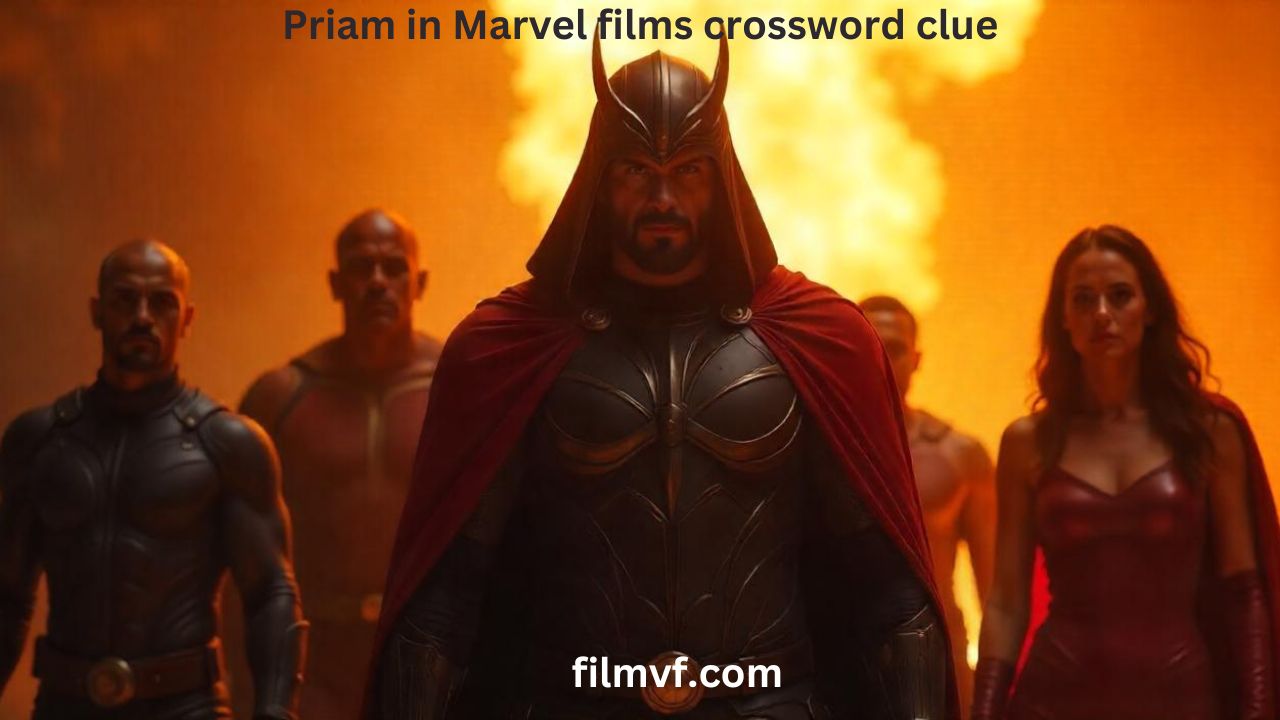
Decoding the Priam in Marvel Films Crossword Clue. Crossword puzzles continue to captivate enthusiasts, blending the thrill of wordplay with clever trivia from various realms. Recently, a specific clue has puzzled Marvel fans: Priam in Marvel films crossword clue. What makes this particular clue so intriguing? Let’s unravel its meaning, significance, and connection to the Marvel cinematic universe. This article dives deep into what the clue represents, its references, and how it fits into Marvel’s expansive lore.
Understanding the Background of Priam: Who Was He?
Priam appears prominently in Greek mythology. As the last king of Troy, he played a crucial role during the Trojan War. His wisdom, leadership, and tragic demise defined him as a character of noble bearing. However, in the context of the Marvel universe, one might wonder how Priam relates to superhero narratives. So, how does Marvel incorporate such a figure rooted in ancient history?
The Marvel Cinematic Universe’s Unique Approach to Mythology
Marvel has consistently drawn from rich mythological sources to create compelling characters and storylines. For instance, Thor’s character emerges from Norse mythology, while the Eternals touch upon various ancient mythos. The inclusion of a figure like Priam may indicate Marvel’s knack for integrating classic historical and mythological figures into their storytelling.
Why Priam’s Reference in Marvel Films Puzzles Fans
So, how does the Priam in Marvel films crossword clue tie into Marvel’s characters or stories? Many Marvel enthusiasts might scratch their heads at this clue, as Priam does not appear explicitly in Marvel movies. However, this crossword clue may refer to a character or concept metaphorically associated with Priam’s attributes—such as leadership, wisdom, or a tragic hero.
The Intriguing Connection Between Priam and Marvel Characters
Marvel often uses subtle references, hidden Easter eggs, or symbolic names to enrich their narratives. For instance, Thanos shares qualities with Priam, especially when it comes to leadership and tragic decisions. Like Priam, Thanos made heart-wrenching choices that led to massive consequences for his people. Yet, unlike Priam, Thanos embraced a more ruthless approach, which ultimately led to his downfall.
Exploring Priam’s Possible Representation in Marvel Films
When trying to decode the Priam in Marvel films crossword clue, fans should think beyond literal appearances. Perhaps Marvel introduces characters with attributes mirroring Priam’s resilience, nobility, and tragedy. In this sense, characters like Odin, the All-Father, or even Doctor Strange could metaphorically align with Priam’s persona due to their wisdom and sacrifices.
Crossword Puzzles and Their Popularity Among Marvel Fans
Crossword enthusiasts, especially those who enjoy Marvel-related trivia, appreciate clues that challenge their knowledge of the films. The Priam in Marvel films crossword clue presents an excellent example of how puzzles can combine intellectual curiosity with pop culture knowledge. Fans must think critically and draw connections between mythology and the cinematic universe.
Marvel’s Fascination with Greek Mythology in Their Stories
While Marvel predominantly focuses on Norse gods like Thor and Loki, their narratives occasionally tap into Greek mythology. The Eternals series, for example, has connections to Greek deities, reflecting Marvel’s creative flexibility. Thus, referencing a figure like Priam hints at Marvel’s broader thematic interest in ancient heroes and legends.
Clues Hidden in Plain Sight: Understanding Marvel’s Easter Eggs
Marvel’s films often hide Easter eggs—small details that reference other films, comics, or historical contexts. The Priam in Marvel films crossword clue may serve as one such hidden gem. If Marvel subtly referenced Priam, it could be through symbolic gestures or character arcs. For instance, an ancient king’s statue or a background dialogue may allude to Priam’s legacy.
Why Crossword Puzzles Feature Marvel Characters and Clues
Crosswords tap into the collective knowledge of players, making them popular among fans of various franchises. The integration of characters like Priam into puzzles captures the imagination, pushing fans to revisit Marvel’s expansive film catalog. These clues also help Marvel aficionados connect different storylines, bridging mythology with modern superhero tales.
The Popularity of Crossword Clues Rooted in Pop Culture
Pop culture crossword puzzles allow fans to test their trivia knowledge, often leading to moments of “aha!” when a clue finally clicks. The Priam in Marvel films crossword clue fits within this trend, challenging fans to think beyond obvious character references. This integration of deeper historical and mythical characters into puzzles showcases Marvel’s far-reaching influence on entertainment.
Analyzing Marvel’s Creative Storytelling Techniques
Marvel’s cinematic universe thrives on blending reality with fantasy. By incorporating ancient figures like Priam, Marvel bridges the gap between mythology and modern superhero tales. Priam symbolizes wisdom, leadership, and tragic heroism, traits embodied by various Marvel characters. This parallel enriches the storylines, adding layers of meaning to character development.
Could Priam Have a Future Role in Marvel Films?
Given Marvel’s expanding universe, it’s plausible they might introduce characters rooted in Greek mythology. Imagine a future film where Priam’s legend ties into an ancient war or a hidden faction within the Marvel universe. Such story arcs could bring fresh perspectives, blending historical intrigue with modern superhero dynamics.
How Fans Solve the Priam Crossword Clue with Contextual Knowledge
To crack the Priam in Marvel films crossword clue, fans should revisit Marvel’s films, focusing on historical references and mythological allusions. Marvel’s intricate storytelling often rewards viewers who pay attention to minor details. Solving such clues requires knowledge beyond the surface, diving deep into character motivations, dialogues, and background elements.
The Impact of Mythological Figures on Modern Storytelling
Decoding the Priam in Marvel Films Crossword Clue. Mythological characters like Priam continue to inspire modern narratives, especially in comics and superhero genres. Marvel’s incorporation of such figures emphasizes timeless themes of heroism, sacrifice, and leadership. By using the Priam in Marvel films crossword clue, creators pay homage to these enduring legends, reminding fans of their timeless relevance.
Final Thoughts on Deciphering the Priam in Marvel Films Crossword Clue
Ultimately, Decoding the Priam in Marvel Films Crossword Clue, the Priam in Marvel films crossword clue encapsulates Marvel’s intricate storytelling and love for weaving myth into modern narratives. Whether it refers to a literal character or metaphorical symbolism, this clue challenges fans to think deeply. By combining history, mythology, and superhero elements, Marvel enriches the viewer’s experience, making each film a treasure trove of hidden meanings.
FAQs
Why does Priam appear in a Marvel crossword clue?
The clue likely refers to characters or themes in Marvel films symbolically related to Priam’s traits, such as leadership.
Could Priam appear in Marvel’s future storylines?
It’s possible. Marvel often draws from mythology to introduce fresh characters and unique story arcs.
How do crosswords connect to the Marvel universe?
Crosswords challenge fans to recall and connect various elements from Marvel films, enhancing their appreciation of the narratives.
Which Marvel characters resemble Priam?
Characters like Odin or Doctor Strange reflect Priam’s wisdom and leadership, though they differ in their methods and outcomes.
How does Marvel blend mythology with superhero stories?
Marvel creatively adapts mythological figures to align with their superhero lore, enriching character arcs with ancient symbolism.
What makes crossword puzzles engaging for Marvel fans?
Puzzles test fans’ knowledge and allow them to explore deeper layers of the Marvel universe, bridging the gap between trivia and storytelling.
-

 Film Streaming9 months ago
Film Streaming9 months agoStreaming Film VF: Your Gateway to French Cinema
-
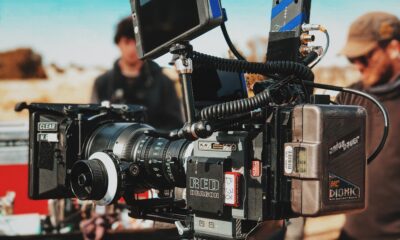
 Film11 months ago
Film11 months agoUnveiling the Magic: Exploring the Art of Film Techniques
-

 Film9 months ago
Film9 months agodG9ERgG-deadpool-2
-

 Film Streaming10 months ago
Film Streaming10 months agoFilm Streaming vs Cinema Experience: Which Offers a Better Movie Viewing Experience?
-

 Film Streaming9 months ago
Film Streaming9 months agosuicide squad streaming
-
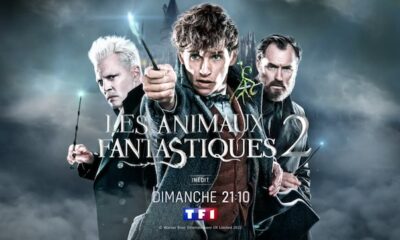
 Film Streaming9 months ago
Film Streaming9 months agoles animaux fantastiques 2 streaming
-

 Film Streaming9 months ago
Film Streaming9 months agoFilm VF Streaming: Your Gateway to French Cinema
-
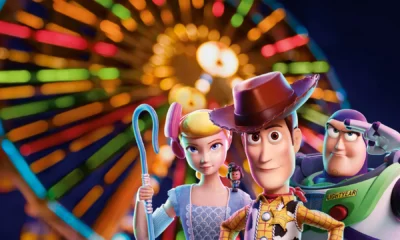
 Film Streaming9 months ago
Film Streaming9 months agoToy Story 4 streaming
